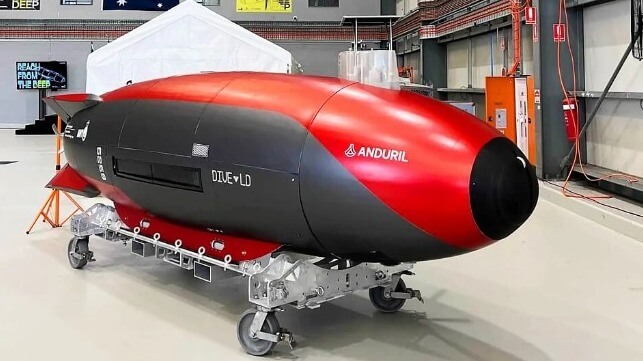NO! SEABED WARFARE!
U.S. Navy Picks Three Vendors to Quickly Field AUVs for Seabed Warfare

The U.S. Navy has picked Kongsberg, Oceaneering and Anduril to develop prototypes for long-range, large displacement unmanned subs, hoping to fill an urgent procurement need on a shorter timetable.
The winners will begin live demonstrations of their solutions - not next year, but next month. These companies already have products in hand, and two of them have decades of experience in the segment. The contracts will allow Navy units around the world the opportunity to borrow or purchase large UAVs for testing, according to Anduril.
The Navy worked with the Pentagon's Defense Innovation Unit, which can execute contracts much more rapidly and with more flexibility than most defense programs. The unit was created for this purpose: to bring commercially-based solutions to the military fast, and without imposing excessive up-front cost on the vendor.
Some of the proposed solutions are grounded in tried-and-true systems. Kongsberg has been building its HUGIN line of autonomous underwater vehicles for a long time, and they are an industry standard for commercial and government operators. The extended range HUGIN Endurance variant will be fielded for the DIU trials. “We are excited to bring our many years of AUV experience in support of the U.S. Government and look forward to closely partnering with DIU and the U.S. Navy to support making their LDUUV program a reality,” said Kongsberg Discovery President Martin Fjell in a statement. “HUGIN’s reliability has created a legacy and our continued evolution has enabled us to provide the expertise needed on such a program.”
Australian contractor Anduril is a relative newcomer, and its Dive-LD model has been in testing for the last two years, but it believes that it has a technological edge. Its sub prototype was constructed in large part with 3D printing, so its shape can be adapted to specific payload requirements with greater ease. The company belives in "an agile software-first mindset, advanced manufacturing processes to enable speed and scale, and products built to solve problems."
The Navy has multiple existing programs to develop subsea autonomous drone capability, but some have encountered challenges.
Snakehead, an autonomous sub that was supposed to deploy from submarine drydeck shelters, was canceled after years of in-house R&D effort by the Navy's research establishment. The service cited “Misalignment of Snakehead LDUUV design and procurement efforts with submarine hosting interfaces," which means a "limited availability of host platforms to conduct Snakehead operations.” Not all subs carry drydeck shelters, and the same equipment is also in demand for Navy SEAL insertion and extraction missions.
Boeing holds the contract for the largest class, the bus-sized XLUUV, but the program is years behind schedule. An initial "test article" has been delivered and is in testing in California. The delay appears to crimp operational plans: the service had planned to put the first five delivered hulls into service as soon as possible, according to GAO, even though they will technically be prototypes.
No comments:
Post a Comment